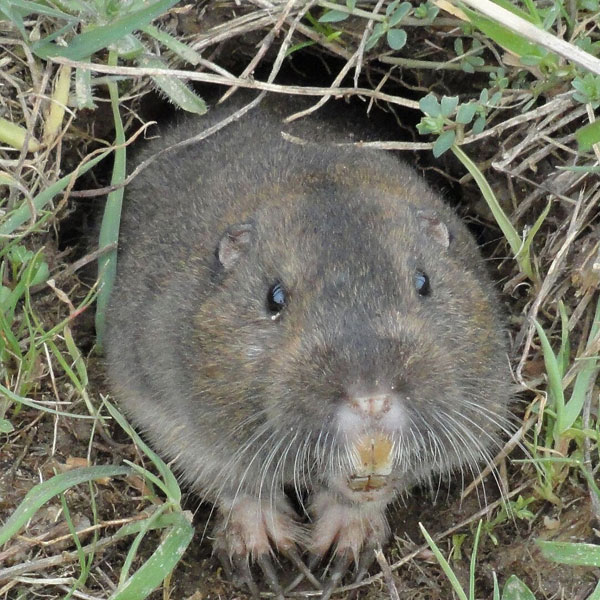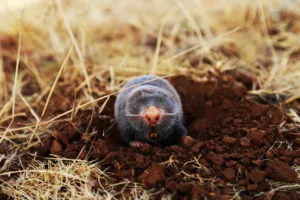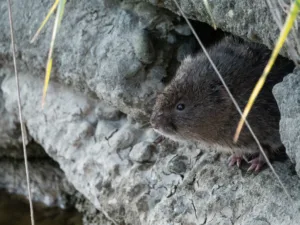Gopher Services

Gopher Control
If you need help with Gopher Removal in Southern California, Professional Pest Management is easily the best company to call to get the job done. You can call us at (877) 232-3055 and speak to our office staff. Our technicians are trained professionals, ready to take on your gopher problem. No gopher is too wily for our crew. We will seek them out and rid you of their holes. Don’t let your yard turn into swiss cheese. We come prepared, we are tenacious, & we are professionals.
A gopher treatment is a minimum of $225 for the first service and then just $75 per month for a maintenance program.
Mole & Vole Control
To the untrained eye, the appearance of mounds and burrows in your landscape may be mistaken for gophers however they may be the result of moles or voles, unique animals who can create havoc in your yard. Our Professional Pest Management technicians are experts at controlling and eliminating these animals and are ready to help rid your landscape of them.
 Moles
Moles
The mole is a small, insect-eating mammal. Moles live almost entirely underground in a vast network of interconnecting tunnels. Moles can cause significant problems, especially in the turf, as they make landscapes unsightly and destroy valuable plants. As soon as mole activity is detected, with an active mound or surface runway, initiate appropriate control actions by calling the Professional Pest Management for eradication and preventative services.
Mole Biology & Behavior
Moles have cylindrical bodies with slender, pointed snouts and short, bare, or sparsely-haired tails. Their limbs are short and spadelike. Their eyes are poorly developed, and their ears are not visible. The fur is short, dense, and velvety. Moles have one litter of three or four young during early spring. Moles create shallow tunnels just below the surface where they capture worms, insects, and other invertebrates. The mounds are formed when moles push soil up to the surface from the underground runways. The excavated soil may be in small chunks, and single mounds often appear in a line over the runway connecting them. They can eat some roots, bulbs, and other plant material, but generally, the most significant problem caused by moles is their burrowing, which dislodges plants and dries out their roots. In lawn areas, the mounds and ridges resulting from their burrowing are unsightly and disfiguring.
Treatment
Several control methods are available, but no simple strategy has proven fail-proof, so it may be necessary to use various techniques. Trapping is the most universally applicable and dependable method of mole control. To be effective, Pest Control Technicians must set the trap to catch the mole underground.
 Voles
Voles
Voles (also referred to as meadow mice) are rodents that target your plants and vegetables by burrowing a system of trails underground, causing damage year-round. The California vole (Microtus californicus) is the most widespread in the state. It takes an expert to understand the behavior and methods required to rid your property of voles, and with the services provided through the Professional Pest Management, you are sure to see vole-free results quickly. Voles will gnaw the bark of fruit trees from a few inches aboveground to a few inches below ground. Voles will disrupt the trees’ flow of nutrients and water; this is called girdling. Girdling damage on trunks and roots can kill trees. Signs of the partial trunk or root girdling may include a prolonged time before young trees bear fruit, reduced fruit yield, and abnormal yellowish leaf color.
Vole Biology & Behavior
Voles look a bit like mice or pocket gophers, ranging in size between 3 and 7 inches. They have a compact, heavy body, short legs, short-furred tail, small eyes, and partially hidden ears. The long, coarse fur is blackish brown to grayish brown. When fully grown, they can measure 5 to 8 inches long, including the tail. A Vole can become sexually mature within a month of being born. Voles may breed any time of year, but the peak breeding period is spring. Voles are highly prolific, with females maturing in 35 to 40 days and having five to ten litters per year. Litter size ranges from three to six. However, voles seldom live past 12 months of age. Although voles spend considerable time aboveground and may occasionally be seen scurrying about, most of their time is spent below ground in their burrow system. They are not good climbers, so they rarely try to get into homes. The most evident signs of their presence are the well-traveled, aboveground runways that connect burrow openings; the runways are usually hidden beneath a protective layer of grass or another ground cover. The maze of runways leads to multiple burrow openings that are about 1-1/2 to 2 inches in diameter. The runways are easily found by pulling back overhanging ground cover. Fresh clippings of green grass and greenish-colored droppings about 3/16 inch long in the runways and near the burrows are further evidence of voles.
Treatment
While commercial repellents are available for protecting plants from voles, their effectiveness is questionable and not practical because they must be applied before damage occurs. Burrow fumigants are not effective on voles because their burrowing system is shallow with numerous openings. Bait that will cause the vole to expire is the quickest and most practical means of control and should only be utilized by licensed professionals such as the technicians at the Professional Pest Management.
Gophers, Ground Squirrels, and Moles
Don’t Allow these guys to spoil your business!
• Burrowing Rodents destroy property
• Burrowing Rodents destroy crops
• Burrowing Rodents destroy plants
• Burrowing Rodents breed quicky
• Burrowing Rodents create hazardous conditions
• Burrowing Rodents WILL cost you money
What can Professional Pest Management do for you?
A Burrowing Rodent Control program is essential. Since each and every property is different,
Professional Pest Management will create a plan tailored to you!.

Would You Like To Learn More About Our Services?
Simply fill out the form below
